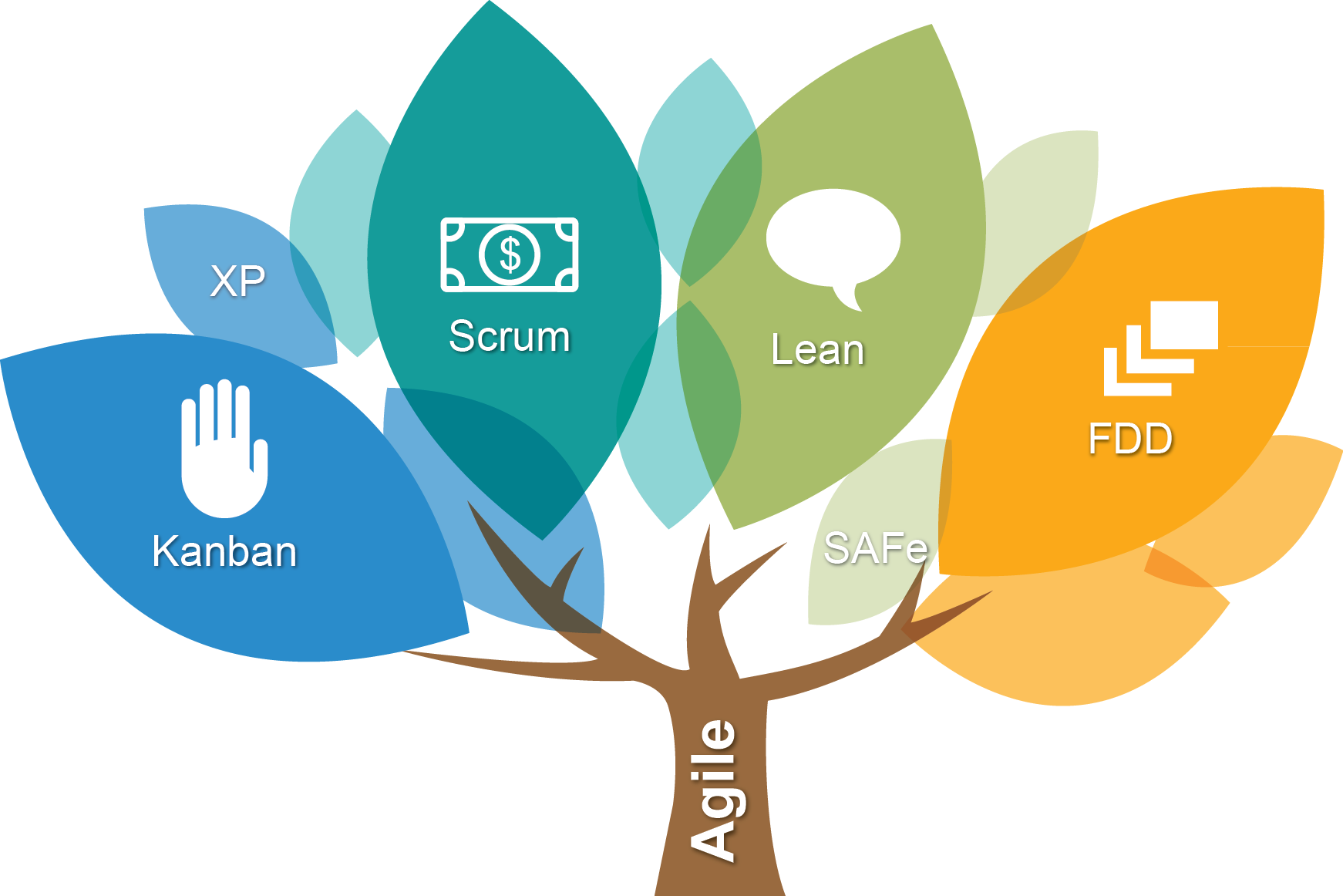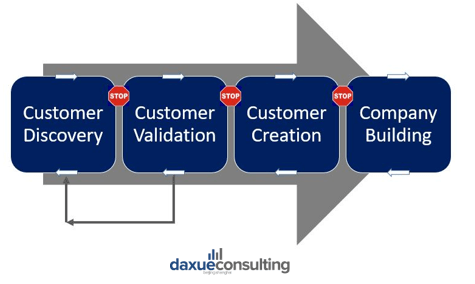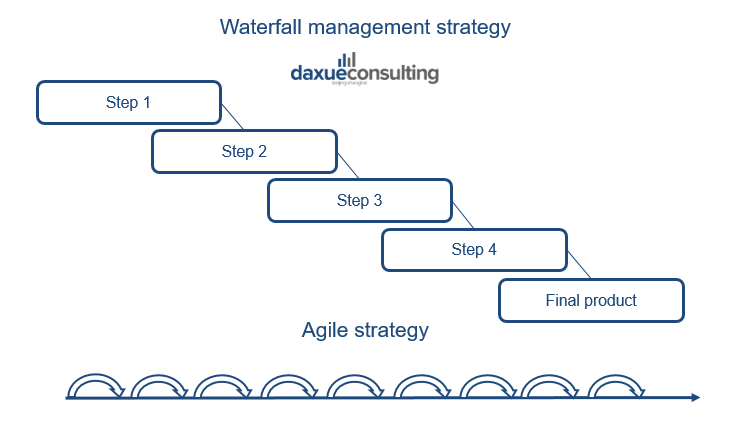Agile Strategy in China

Why is Agile Strategy in China so important?
Agile Strategy in China
A consumer-centric way of doing project management in China
The first step into failure and disaster, e.g., when launching a new product or entering the Chinese market, is solely sticking to an earlier, commonly known path to success. Especially in a unique and dynamic market like the Chinese market, obstinately following strategies that have shown success in the past, can be fatal.
One example would be when many companies continue using the commonly applied New Product Development (NPD) model. This product-centric model focuses on identifying market opportunities and best practices. What sounds very promising, actually has a crucial point: to not purely focusing on identifying market opportunities and develop and produce a new product, but to not neglect the customers. One needs to have the ability to ask first “who are the customers and why do they buy?” as well as to say “stop” or “slow down” until the customers are fully understood instead of living to the credo “build and they will come.” In short, that means one has to have the ability to be agile in project management in China to not develop and produce a product full-scale, which ends up not getting purchased.
To illustrate this, we can use the example of Decathlon’s sales in China. Decathlon has entered the Chinese market based on the success of its tents around the world. And, in the beginning, it seemed that the Chinese also loved Decathlon tents. However, where they had to be agile, it was necessary to quickly understand why Chinese people liked Decathlon tents. Thus Decathlon, after a long time on the Chinese market, being satisfied with their already good sales, understood that the Chinese did not buy tents to camp but to protect themselves from the sun in the parks. Without an agile strategy in China, Decathlon would have missed a golden opportunity. They have therefore modified their marketing around the tents highlighting the UPF 50 sun protection.

What does acting “agile” in China mean?
In order to be sustainably successful, companies should definitely adopt an agile strategy in China. But what does this actually imply? At Daxue Consulting, we define being “agile” as making a series of small, iterative refinements so that an organization has the flexibility to respond to unpredictability. These iterations are at the heart of what we called iterative marketing in China.
Unpredictability is the reason why following to formerly or even currently successful strategies may lead to failure in the future. The Chinese market changes, and so do its customers and their behaviors. Thus, while creating and following to a vision and long-term objectives are imperative, the idea of acting agile is to break those long-term goals into smaller iterative projects which the organization can quickly test and learn from. Interestingly, choosing to work on iterative marketing in China also means to fail on the road to success:

Because failing is okay if one plans to learn from it, in doing so, by iterating the processes, each step can be optimized. Moreover, only if repeatable customers (the goal of the Customer Discovery is to understand the customers, their preferences and buying behaviors) with a repeatable sales process (the goal of the Customer Validation is to make customers loyal) that yields profitable business model appear, it will be moved on to engaging in heavy marketing.
Creating and driving end-user demand into the company through marketing (Customer Creation) should only be done after the point where a company acquired its first customers and knows who they are. Finally, the focus can be shifted to building the organization to scale and execute the business plan (Company Building).
Very often, agility is opposed to waterfall project management. In other words, you have to be prepared not to have a plan from A to Z but to work more instinctively. The behavior of Chinese consumers is difficult to understand and to anticipate because markets are changing very fast. Some major successes were impossible to predict, such as the success of Heytea in China, which was quite unexpected. Thus, adopting an agile strategy in China is more cost-effective, faster, and above all, much less risky. This is not only an approach for startups but all types of businesses!

How to be agile in China, and how can Daxue Consulting contribute?
To perform each of these steps as effective as possible, the organization needs to be flexible and agile. But how can a company ensure to meet the requirements? How can you choose best your agile strategy for project management in China? At Daxue Consulting, we have the required experience and expertise in the Chinese market to know which methods are applicable to act agile in China. But remember, being agile does not mean following a methodology; it’s more like an approach, a mindset. The most common agile strategies in China are the following:
1.Scrum – the most common agile framework for project management in China. It suggests three different roles within a team, which is supposed to accomplish several so-called sprints (iterations) within a fixed duration (mostly two weeks to one month):
- the product owner (representative of the stakeholders as well as the customers’ voice),
- the development team (responsible for delivering the shippable product increments for every sprint), and
- the scrum master (who doesn’t act as a team leader but is responsible for the team to follow the Scrum framework). Moreover, a good scrum master doesn’t drive but coaches the team, facilitates meetings instead of running the team as well as talks less and listens more to being able to encourage the team to improve
The most crucial aspect about Scrum is that the scrum team is self-organized within the framework, meaning that the team is responsible for scheduling and completing the work. Using Scrum will lead to a fundamental shift, which is why external help from experts can be crucial. At Daxue, we can help you with setting up your first agile team. We suggest starting with a small group of a maximum of seven members (the core team) that understands how to act agile in China and is able to teach others in the organization later on.
2. Kanban – Kanban is less a fundamental change than scrum. Using this agile methodology, no specific team roles will be implemented, but a Kanban board is followed. Different work items need to be identified that pass through the board. The board shows different work states from in progress to testing to release. It’s also about interactive marketing in China. The only management criteria are WIP (“Work in Progress”) – each Kanban work state should define a WIP limit to indicate how many items are allowed in the same state at a certain time. All in all, Kanban is about visualizing the work on the board and monitoring the WIP.
3. Extreme Programming (XP) – XP is the most specific way to act agile in China regarding actual engineering practices for software development. Due to its complexity, there may be situations where it does not apply to an organization. However, if so, it follows always five general values:
- Communication
- Simplicity
- Feedback
- Courage
- Respect
At Daxue, we can enlighten you further about these values, whether this method is applicable for your organization and goals acting agile in China, as well as how it is connected to Scrum.
- Scaled Agile Framework (SAFe) – the agile software development framework consists of an online knowledge base of success patterns and intends to support lean product development. The framework was developed in the field and is supposed to help to overcome scaling problems, too.
- Lean – within the agile frameworks lays the idea of lean. This concept suggests reducing/eliminate non-value-added activities (“wastes”) so that the customer value will be increased. In doing so, all agile frameworks try to lean as to be as efficient as possible.

Our team is constantly working on agile strategies in China to provide clear guidelines for your success.
Contact us now to discuss with our project management how you can adopt an agile strategy in China. Our project managers will work closely with your team to explain the different approaches in detail and collaboratively decide how you can best work on project management in China.

